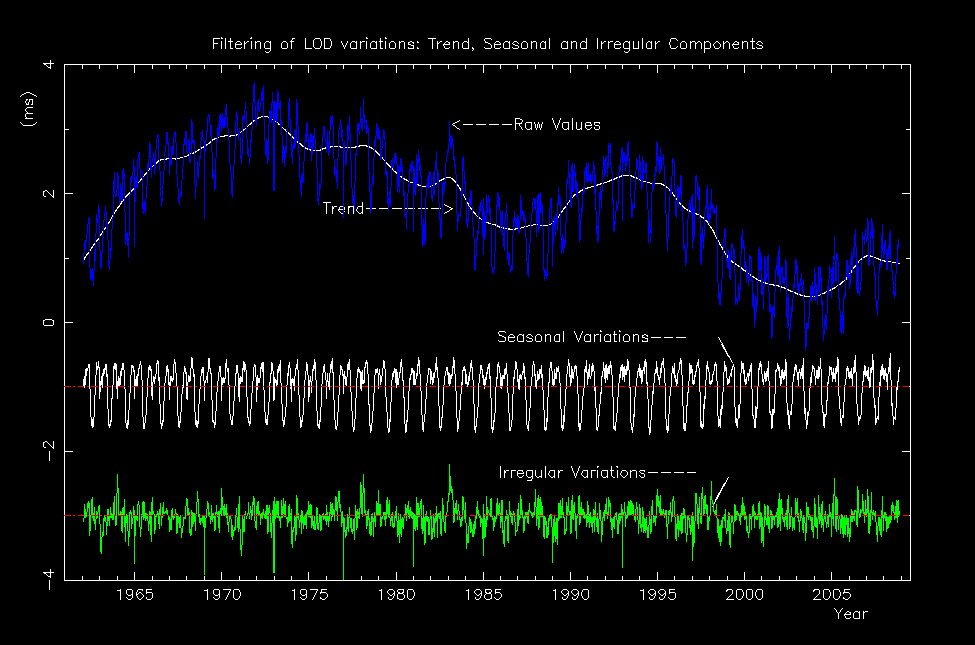


| UNIVERSAL TIME UT1 - LENGTH OF DAY LOD |
|
Coordinates of the pole | Celestial pole offsets | UTC Values of LOD / TT - UT1 since 2000 BC | TAI-UTC |
|
UT1 is related to the Greenwich mean sidereal time (GMST) by a conventional relationship (Aoki et al., 1982) ; it
gives access to the direction of the IERS Reference Meridian in the ICRS, reckoned around the CEP axis.
It is expressed as the difference UT1-TAI or UT1-UTC.
TAI is the atomic time scale of BIPM ; its unit interval is exactly one SI second at sea level. The origin of TAI is such that UT1-TAI ~ 0 on 1958 January 1, but the beginning of the TAI measurements goes back july 1955. The instability of TAI is about 6 orders of magnitude smaller than that of UT1. The Terrestrial Time TT is presently defined as TT=TAI + 32.184 s. The difference between the astronomically determined duration of the day and 86400 SI seconds is also called excess of length of day (LOD). The relationship of the angular velocity of the Earth ωwith LOD is ω =ΩN (1- LOD/T)where ΩN= 72 921 151.467064 10-12radians/s is the NOMINAL rotation rate (corresponding to the mean rotation rate of the epoch 1820) and T the associated duration of the mean solar day that is to say T =86400 s TAI. Universal time and length of day are subject to variations due to the zonal tides (smaller than 2.5 ms in absolute value), to oceanic tides (smaller than 0.03 ms in absolute value), to atmospheric circulation, to internal effects and to transfer of angular momentum to the Moon orbital motion. The variations in LOD can be split into several components,according to their causes. The total variation is shown in the upper part of the figure, without oscillations induced by the tides of the solid Earth and oceans, are shown separately for the long and short periods. The dynamical influence of the liquid core of the Earth and climatic variations in the atmosphere account for slow variations (trend in the upper part of the figure). The rest of the atmospheric excitation can be split into a seasonal oscillation and residual oscillation, which includes 50-day oscillations as well as large anomalies like the one associated with the 1983 El Niño event. Historical values of LOD since 2000 BC, determined from ancient eclipses records, are available here. Models for the tidal variations of UT1 are available in the IERS Conventions, Chap. 8.  Figure: decomposition of the LOD Reference: Aoki,S., Guinot, B., Kaplan, G.H., Kinoshita, H., McCarthy, D.D., Seidelmann, P.K. 1982: Astron. Astrophys.105, 1. |